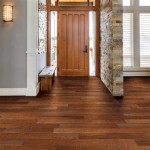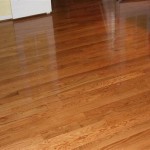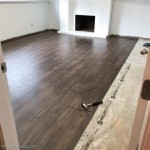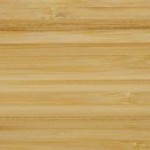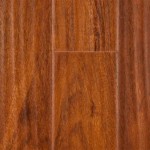Engineered Flooring vs. Laminate: Essential Considerations
Selecting the right flooring for your home is an important decision that involves considering both aesthetic appeal and functionality. Two popular options are engineered flooring and laminate. Understanding the key differences between these two materials will help you make an informed choice that meets your specific needs.
Material Composition
Engineered flooring consists of a top layer of real hardwood veneer bonded to a core of plywood or high-density fiberboard (HDF). The veneer provides the natural beauty of wood, while the core offers stability and durability. Laminate flooring, on the other hand, has a thin layer of photographic paper or plastic impregnated with a wood-grained image that is fused to a core of HDF. It is then coated with a protective layer of resin.
Durability and Longevity
Engineered flooring tends to be more durable than laminate flooring due to its real wood veneer. It can withstand scratches, impact, and moisture better. The lifespan of engineered flooring is typically 20-25 years, while laminate flooring can last 10-15 years.
Water Resistance
Engineered flooring has a limited ability to resist moisture due to the real wood veneer. Prolonged exposure to water can cause warping or buckling. Laminate flooring is more water-resistant than engineered flooring, making it a better option for high-moisture areas such as kitchens and bathrooms.
Installation and Maintenance
Both engineered flooring and laminate flooring can be installed as a floating floor, meaning they are not glued or nailed to the subfloor. Engineered flooring typically requires a professional installation, while laminate flooring can be installed as a do-it-yourself project. Maintenance for engineered flooring involves sweeping, vacuuming, and occasional mopping. Laminate flooring is easy to clean and requires only mopping and occasional cleaning with a laminate floor cleaner.
Cost
Engineered flooring is generally more expensive than laminate flooring, due to its real wood veneer. The cost of engineered flooring can vary depending on the species of wood, thickness of the veneer, and quality of the core. Laminate flooring is a more affordable option, with a wide range of styles and finishes to choose from.
Environmental Impact
Engineered flooring is considered more sustainable than laminate flooring because real wood is a renewable resource. The production of laminate flooring involves the use of plastics and chemicals, which can have a negative impact on the environment.
Conclusion
Whether you choose engineered flooring or laminate flooring depends on your specific needs and preferences. Engineered flooring offers the beauty and durability of real wood, while laminate flooring is a more affordable and water-resistant option. By carefully considering the factors discussed in this article, you can make an informed decision that will enhance the style and functionality of your home flooring.

Engineered Flooring Vs Laminate Everything You Need To Know Forbes Home

Engineered Hardwood Vs Laminate

Engineered Hardwood Vs Laminate

Laminate Vs Hardwood Flooring Major Differences Forbes Home

Hardwood Vs Laminate Engineered Floors What S The Difference Clean My Space

Engineered Hardwood Vs Laminate

Hardwood Vs Engineered Wood Flooring Which Is Best For You Forbes Home

Laminate Floor Guide Lowe S

Luxury Vinyl Plank Flooring Vs Engineered Hardwood Next Day Floors

Pergo Outlast Grey Optimus Pine 12 Mm T X 7 4 In W Waterproof Laminate Wood Flooring 549 6 Sqft Pallet Lf000993plt The Home Depot
Related Posts

